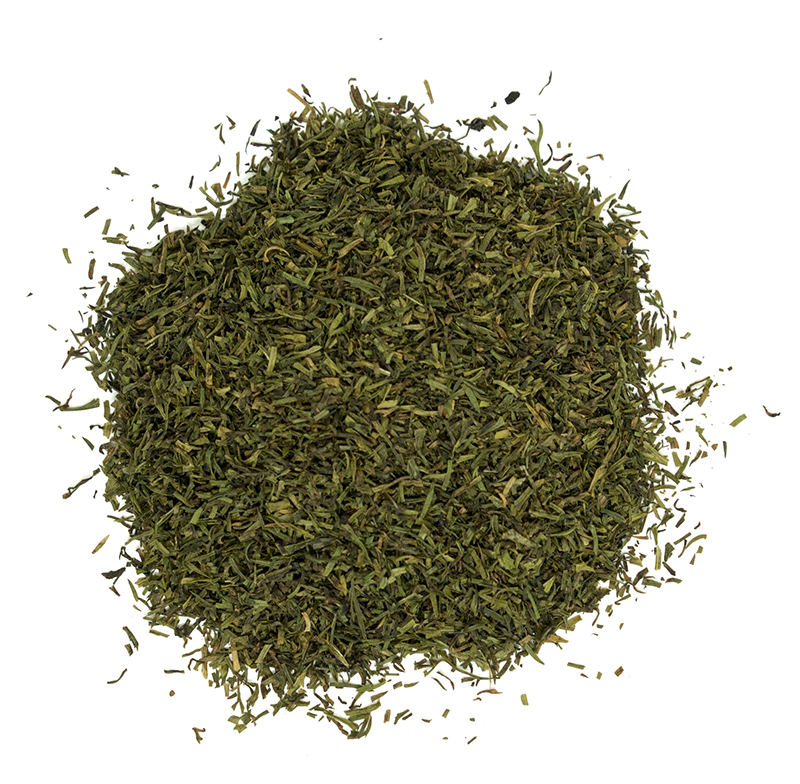-
Description
Botanically known as Anethum graveolens, Dill belongs to the same family as parsley and celery, though it is the sole species of its genus. It is native to the eastern Mediterranean region and western Asia.
In 1st century Rome, Dillweed was considered a good luck symbol. Ancient Egyptians used it to ward off witches and as an aphrodisiac. To the Greeks, Dill signified wealth. Many cultures cultivated it for medicinal qualities, it was believed to soothe an ailing stomach
Farmers will harvest Dillweed in the early morning. The higher moisture content of the plants, when harvested at this time results in better flavour, and the possibility of seed shattering is minimized. Dill weed is best harvested before the plant is fully mature and before the flower buds have opened.
Dill is most commonly known for giving Dill pickles their characteristic flavour. However, Dill has a myriad of culinary uses that go beyond pickles. The general home cook most often uses Dill in two forms: Dill seed and Dillweed. Cooks often prefer to use dill weed because it has a stronger flavor than that of dill seed.
Fun Fact: Dill was believed to provide protection from witchcraft, most likely because of its strong smell. People thought that if a witch cast a spell on you, the cure could be found by drinking a cup of Dill water.
-
Directions
Use one teaspoon of dried Dill for every tablespoon of fresh Dill in a recipe that calls for Dillweed.
-
Uses
- Dill can be added to casseroles, lamb, fish, vegetable dishes, and sauces.
- Dill vinegar can be made by adding the seeds to vinegar and allowing the mixture to steep for several days.
- The Swedish people use Dill to make a dish called gravlax, which consists of salmon pickled in salt, sugar, and Dill. Gravlax is often served as an appetizer with Dill and mustard sauce.
- In Holland, Dill is steeped in hot milk to help induce sleep.
| SKU | Unit Size |
|---|---|
| 36878 | 3 x 25 g |
| 36874 | 3 x 400 g |
| 36876 | 10 kg BULK |
-
Description
-
Directions
-
Uses
-
Botanically known as Anethum graveolens, Dill belongs to the same family as parsley and celery, though it is the sole species of its genus. It is native to the eastern Mediterranean region and western Asia.
In 1st century Rome, Dillweed was considered a good luck symbol. Ancient Egyptians used it to ward off witches and as an aphrodisiac. To the Greeks, Dill signified wealth. Many cultures cultivated it for medicinal qualities, it was believed to soothe an ailing stomach
Farmers will harvest Dillweed in the early morning. The higher moisture content of the plants, when harvested at this time results in better flavour, and the possibility of seed shattering is minimized. Dill weed is best harvested before the plant is fully mature and before the flower buds have opened.
Dill is most commonly known for giving Dill pickles their characteristic flavour. However, Dill has a myriad of culinary uses that go beyond pickles. The general home cook most often uses Dill in two forms: Dill seed and Dillweed. Cooks often prefer to use dill weed because it has a stronger flavor than that of dill seed.
Fun Fact: Dill was believed to provide protection from witchcraft, most likely because of its strong smell. People thought that if a witch cast a spell on you, the cure could be found by drinking a cup of Dill water.
-
Use one teaspoon of dried Dill for every tablespoon of fresh Dill in a recipe that calls for Dillweed.
-
- Dill can be added to casseroles, lamb, fish, vegetable dishes, and sauces.
- Dill vinegar can be made by adding the seeds to vinegar and allowing the mixture to steep for several days.
- The Swedish people use Dill to make a dish called gravlax, which consists of salmon pickled in salt, sugar, and Dill. Gravlax is often served as an appetizer with Dill and mustard sauce.
- In Holland, Dill is steeped in hot milk to help induce sleep.
